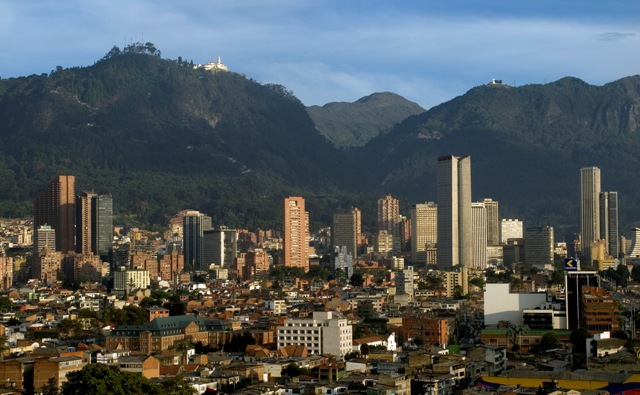Columbia is the oldest democracy in Latin America. Unlike many other Latin American countries, the Colombians have respect for their Constitution and the democratic process and in the 20th have only endured one military coup lasting just four years. Nevertheless, politics in Columbia is a blood sport and people die violent deaths for their political affiliations. Beginning in 1948, the murder of a left wing politician in Bogota set off nine years of warfare, pitting the Conservatives against the Liberals. The urban fighting in Bogota spread to other cities and into the countryside. When the National Front Government brought the madness to an end in 1957, 350,000 people had died. This period, called La Violencia, spawned left wing guerrilla movements, FACR being the most enduring, which in turn gave rise to right wing self defense forces claiming to protect the people and the government. The drug cartels complete the third prong of Columbia trinity of evil. Due to the high profitability of providing 90% of the world’s cocaine and a vast quantity of marijuana and heroin, both left wing and right wing guerrilla groups entered into the narco trafficking business. Each of these factions have had their own private armies and the civilian population was in the deadly embrace of ransom-kidnapping, violence and atrocities while the corruption of public officials reached as high up as the office of the president. Columbia was associated with “mad, bad, and dangerous” and the number of displaced people ranked second to Sudan. By mid 1990’s, Bogota was considered the most dangerous city in the world and was referred to as “un enfierno” a living hell. If a person escaped being ransomed, being caught in a cross fire, being robbed by armed gangs then there was still the possibility of being run over while crossing the street or being killed in a traffic accident because, in Bogota, the motorists were also out of control.
Then in 1995 Antanas Mockus, a philosopher-mathematician- educator without any prior political experience was elected mayor of Bogota followed in 1998 by Enrique Penalosa, an economist and administrator, and together these two forward looking charismatic mayors, often using eccentric measures, regained control of the city. Their focus was urban planning which served the needs of all the people regardless of income. They tamed the traffic and people began to stop at traffic lights, stop signs and no longer parked their cars on the sidewalk. With emphasis on public spaces, they set up greenways, planted trees, built new parks and refurbished the old ones. Sidewalks were rebuilt, roads repaired and new ones built. Considering the automobile anathema to the general welfare, they set up the Ciclo Ruta , two hundred and eleven miles of connecting bicycle paths.
